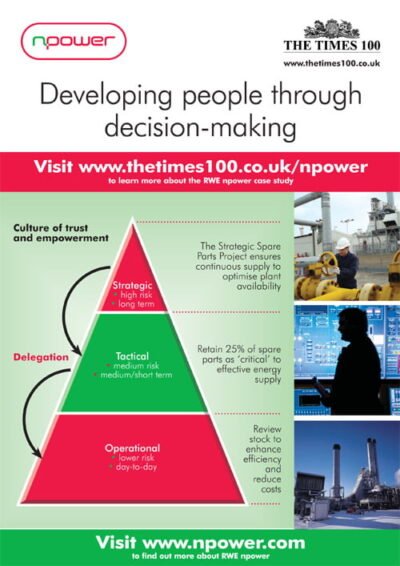External benchmarking is a strategic process that involves comparing an organisation’s performance metrics, processes, and practices against those of other organisations, typically within the same industry or sector. This practice is essential for identifying areas of improvement and understanding competitive positioning. By examining how others achieve their results, organisations can gain insights into best practices and innovative approaches that may not be evident from internal analysis alone.
The essence of external benchmarking lies in its ability to provide a broader perspective on performance, allowing organisations to set realistic goals based on industry standards. The process of external benchmarking often begins with identifying key performance indicators (KPIs) that are relevant to the organisation’s objectives. These KPIs can encompass a wide range of metrics, including financial performance, customer satisfaction, operational efficiency, and employee engagement.
Once these indicators are established, organisations can select appropriate benchmarking partners—these may include direct competitors or companies renowned for excellence in specific areas. The goal is to gather data that can illuminate gaps in performance and highlight opportunities for enhancement.
Summary
- External benchmarking involves comparing an organisation’s performance, processes, and practices with those of external companies or industries.
- The benefits of external benchmarking include identifying best practices, improving performance, and gaining a competitive edge in the market.
- Types of external benchmarking include competitive benchmarking, functional benchmarking, and generic benchmarking.
- Conducting external benchmarking involves identifying benchmarking partners, collecting and analysing data, and implementing best practices.
- Best practices for external benchmarking include setting clear objectives, maintaining confidentiality, and continuously monitoring and adapting to changes in the market.
Benefits of External Benchmarking
The advantages of external benchmarking are manifold and can significantly impact an organisation’s strategic direction. One of the primary benefits is the identification of performance gaps. By comparing their metrics with those of industry leaders, organisations can pinpoint specific areas where they lag behind.
This awareness can drive targeted improvements, fostering a culture of continuous enhancement. For instance, a manufacturing firm may discover that its production cycle is longer than that of its competitors, prompting a review of its processes to streamline operations. Moreover, external benchmarking can stimulate innovation within an organisation.
Exposure to different methodologies and practices can inspire teams to think creatively about their own processes. For example, a retail company might learn from a competitor’s successful implementation of an omnichannel strategy, leading to the development of new customer engagement initiatives. This cross-pollination of ideas not only enhances operational efficiency but also contributes to a more dynamic organisational culture that embraces change and innovation.
Types of External Benchmarking
External benchmarking can be categorised into several distinct types, each serving different purposes and offering unique insights. Competitive benchmarking focuses specifically on direct competitors within the same industry. This type allows organisations to assess their standing relative to those they compete with most closely, providing a clear picture of market positioning.
For instance, a bank might compare its customer service metrics with those of other banks in the region to identify best practices in client engagement. Functional benchmarking, on the other hand, involves comparing specific functions or processes with those of leading organisations outside the industry. This approach can yield valuable insights into innovative practices that may not be prevalent within the organisation’s immediate competitive landscape.
For example, a healthcare provider might look at how leading technology firms manage their supply chains to enhance efficiency in medical equipment procurement. Process benchmarking focuses on specific processes rather than overall performance metrics. This type allows organisations to drill down into particular operational areas, such as inventory management or customer service protocols.
By examining how others execute these processes, organisations can adopt best practices that lead to improved efficiency and effectiveness.
How to Conduct External Benchmarking
Conducting external benchmarking requires a systematic approach to ensure that the data collected is relevant and actionable. The first step is to define the objectives clearly. Organisations must determine what they hope to achieve through benchmarking—whether it is improving customer satisfaction scores, reducing operational costs, or enhancing product quality.
Clear objectives will guide the selection of appropriate KPIs and benchmarking partners. Once objectives are established, organisations should identify suitable benchmarking partners. This selection process involves researching potential companies that excel in the desired areas.
It is crucial to choose partners that are willing to share information and insights; this may involve reaching out through industry associations or networking events. After establishing partnerships, organisations can begin collecting data through surveys, interviews, or public reports. The data should be analysed carefully to draw meaningful comparisons and identify actionable insights.
External Benchmarking Best Practices
To maximise the effectiveness of external benchmarking efforts, organisations should adhere to several best practices. First and foremost is the importance of maintaining transparency throughout the process. Open communication with benchmarking partners fosters trust and encourages the sharing of valuable insights.
Establishing clear agreements regarding data sharing and confidentiality can help mitigate concerns about competitive advantage. Another best practice is to ensure that the data collected is relevant and up-to-date. Relying on outdated information can lead to misguided conclusions and ineffective strategies.
Regularly reviewing and updating benchmarking data ensures that organisations remain aligned with current industry standards and practices. Additionally, involving cross-functional teams in the benchmarking process can enhance the breadth of insights gained. Different perspectives from various departments can lead to a more comprehensive understanding of performance gaps and opportunities for improvement.
Challenges of External Benchmarking
Despite its numerous benefits, external benchmarking is not without challenges. One significant hurdle is the difficulty in obtaining accurate and comparable data. Many organisations are reluctant to share sensitive information about their operations or performance metrics, which can limit the depth of analysis possible.
This lack of transparency can hinder the benchmarking process and lead to incomplete or skewed comparisons. Another challenge lies in ensuring that the benchmarks selected are relevant and applicable to the organisation’s context. Different organisations may have varying operational structures, market conditions, and customer bases, making direct comparisons problematic.
It is essential for organisations to contextualise their findings and consider how external benchmarks apply to their unique circumstances rather than adopting them blindly.
Examples of Successful External Benchmarking
Numerous organisations have successfully leveraged external benchmarking to drive significant improvements in performance and competitiveness. One notable example is Starbucks, which has consistently used external benchmarking to refine its customer experience strategies. By analysing customer feedback from various sources—including social media and competitor reviews—Starbucks has been able to identify areas for enhancement in service delivery and product offerings.
This commitment to understanding customer preferences has allowed Starbucks to maintain its position as a leader in the coffeehouse market. Another example is General Electric (GE), which has employed external benchmarking as part of its Six Sigma quality improvement initiative. By comparing its manufacturing processes with those of top-performing companies across various industries, GE has been able to implement best practices that have led to substantial reductions in defects and improvements in operational efficiency.
This approach not only enhanced product quality but also contributed to significant cost savings for the organisation.
The Importance of External Benchmarking
External benchmarking serves as a vital tool for organisations seeking to enhance their performance and maintain competitiveness in an ever-evolving marketplace. By systematically comparing their practices against those of others, organisations can uncover valuable insights that drive innovation and improvement. While challenges exist in obtaining accurate data and ensuring relevance, the benefits far outweigh these obstacles when approached with diligence and strategic intent.
In an era where agility and responsiveness are paramount, external benchmarking provides organisations with the necessary framework to adapt and thrive amidst changing market dynamics. As businesses continue to navigate complexities in their respective industries, embracing external benchmarking will be crucial for fostering a culture of continuous improvement and achieving long-term success.
External benchmarking is a crucial tool for businesses looking to improve their performance by comparing themselves to industry peers. According to a recent article on Business Case Studies, implementing AI technology in your business can also help drive efficiency and innovation. By leveraging artificial intelligence, companies can streamline processes, make data-driven decisions, and stay ahead of the competition. This article provides valuable insights into how businesses can harness the power of AI to stay competitive in today’s fast-paced market.
FAQs
What is external benchmarking?
External benchmarking is a process in which a company compares its performance, processes, and practices with those of other organizations in the same industry or sector. This allows the company to identify areas for improvement and best practices that can be adopted to enhance its own performance.
How is external benchmarking different from internal benchmarking?
External benchmarking involves comparing a company’s performance with that of other organizations, while internal benchmarking involves comparing different departments or units within the same company. External benchmarking provides a broader perspective by looking at industry-wide best practices and performance metrics.
What are the benefits of external benchmarking?
External benchmarking can help a company identify areas for improvement, set realistic performance targets, and gain insights into best practices and industry standards. It can also help in identifying competitive advantages and positioning the company within the industry.
What are some common methods of external benchmarking?
Common methods of external benchmarking include conducting surveys, participating in industry benchmarking studies, and using publicly available data and industry reports. Companies can also engage in direct benchmarking by collaborating with other organizations to share best practices and performance data.
How can a company effectively use external benchmarking?
To effectively use external benchmarking, a company should first identify key performance indicators and areas for improvement. It should then gather relevant data from industry sources, analyze the data to identify best practices and performance gaps, and develop an action plan to implement improvements based on the benchmarking findings.
 Npower A3 ePoster Edition 14 "Developing people through decision making"
Npower A3 ePoster Edition 14 "Developing people through decision making"  Developing products and services to meet market demand (PDF)
Developing products and services to meet market demand (PDF) 

